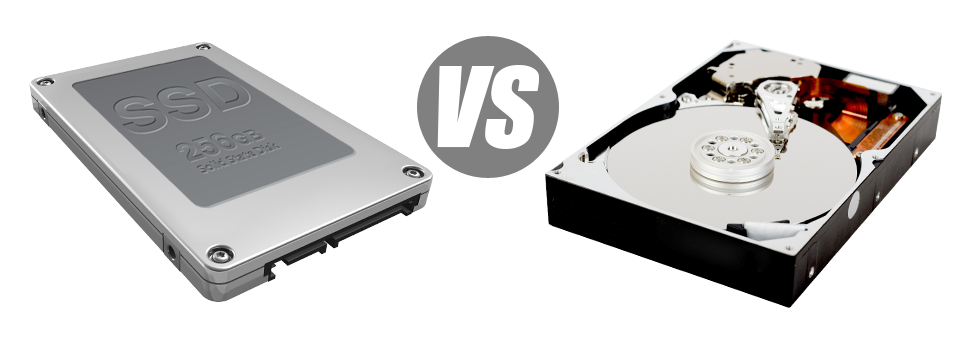For many years there seemed to be just one single trustworthy way for you to keep data on your personal computer – using a disk drive (HDD). Then again, this sort of technology is currently displaying it’s age – hard disks are really noisy and sluggish; they’re power–hungry and are likely to create a lot of heat throughout intense procedures.
SSD drives, on the contrary, are quick, use up a lesser amount of power and they are far less hot. They offer an innovative solution to file access and storage and are years ahead of HDDs regarding file read/write speed, I/O performance and energy capability. Figure out how HDDs stand up up against the more recent SSD drives.
1. Access Time
With the launch of SSD drives, file access rates are now over the top. With thanks to the brand–new electronic interfaces utilized in SSD drives, the average data access time has been reduced to a all–time low of 0.1millisecond.
The concept powering HDD drives times all the way to 1954. And although it has been considerably processed in recent times, it’s nevertheless no match for the inventive concept powering SSD drives. With today’s HDD drives, the very best file access rate it is possible to attain varies in between 5 and 8 milliseconds.
2. Random I/O Performance
As a result of exact same radical technique allowing for better access times, it’s also possible to benefit from far better I/O performance with SSD drives. They are able to complete double as many procedures during a given time as compared to an HDD drive.
An SSD can manage a minimum of 6000 IO’s per second.
Over the same lab tests, the HDD drives proved to be much slower, with simply 400 IO operations maintained per second. Although this might appear to be a great number, for people with an overloaded web server that contains many famous websites, a sluggish hard disk drive can lead to slow–loading websites.
3. Reliability
SSD drives lack any sort of rotating parts, meaning there’s much less machinery within them. And the fewer actually moving elements you will find, the fewer the possibilities of failing can be.
The average rate of failure of any SSD drive is 0.5%.
HDD drives implement spinning disks for holding and reading through data – a technology since the 1950s. Along with hard disks magnetically suspended in mid–air, rotating at 7200 rpm, the prospects of something going wrong are considerably bigger.
The regular rate of failing of HDD drives ranges among 2% and 5%.
4. Energy Conservation
SSD drives are usually smaller than HDD drives and also they lack any moving components whatsoever. Consequently they don’t make as much heat and need much less power to function and fewer power for cooling down reasons.
SSDs consume amongst 2 and 5 watts.
HDD drives can be infamous for being noisy; they can be liable to overheating and in case there are several disk drives in one web server, you have to have one more cooling unit simply for them.
In general, HDDs consume between 6 and 15 watts.
5. CPU Power
The speedier the data accessibility rate is, the swifter the file calls will likely be delt with. Therefore the CPU will not have to hold assets expecting the SSD to answer back.
The regular I/O delay for SSD drives is just 1%.
When compared to SSDs, HDDs enable not so quick data file accessibility speeds. The CPU must wait for the HDD to return the required data, scheduling its resources in the meantime.
The typical I/O delay for HDD drives is around 7%.
6.Input/Output Request Times
The majority of our new servers are now using merely SSD drives. Each of our lab tests have indicated that with an SSD, the common service time for an I/O request while building a backup remains under 20 ms.
With the exact same server, yet this time built with HDDs, the outcome were completely different. The average service time for any I/O query fluctuated somewhere between 400 and 500 ms.
7. Backup Rates
You can check out the real–world added benefits of utilizing SSD drives each and every day. For instance, on a server loaded with SSD drives, a full backup will take simply 6 hours.
In contrast, on a hosting server with HDD drives, an identical data backup can take three to four times as long to complete. A full backup of any HDD–powered server normally takes 20 to 24 hours.
Our Linux cloud hosting accounts offer SSD drives automatically. Be part of our family here, at Juicy Hosting, to see how we can assist you boost your website.
Hepsia
- Live Demo
Service guarantees
- Our Virtual Private Servers provide no installation rates and work in a reliable network providing 99.9% of uptime. Full admin server access guaranteed.
Compare our prices
- Have a look at our price list and choose the perfect Virtual Private Server for your active web sites. It is easy to move up to a more advanced VPS Hosting setup with simply a mouse click.
- Compare our hosting plans
Contact Us
- Our representatives are available for you around the clock to respond to any kind of queries regarding our VPS Hosting platform. 60–min reply–back time frame guarantee.














